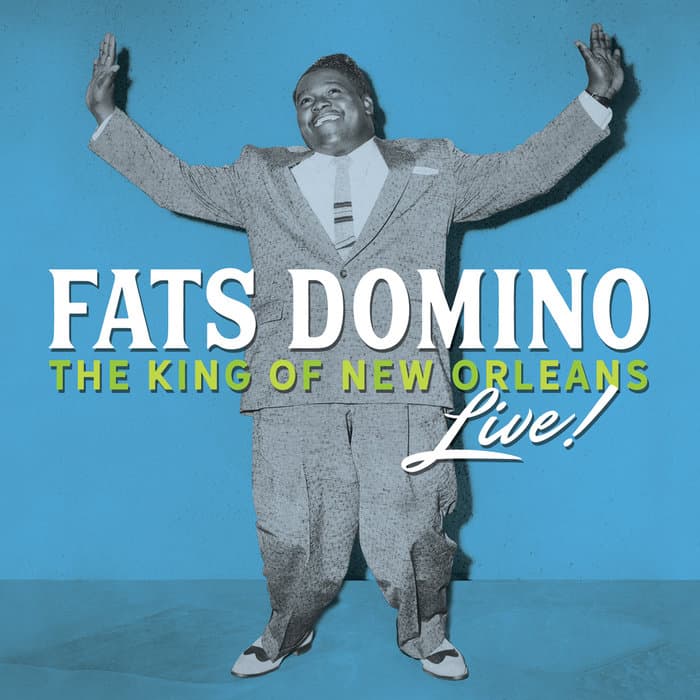
The Enduring Magic of the Crescent City Sheikh: How Fats Domino Reimagined a Roaring Twenties Standard
When we talk about the architecture of Rock and Roll, few names shine as brightly and warmly as Antoine “Fats” Domino. His gentle, rolling piano style, rooted deep in the rich musical soil of New Orleans, served as an essential blueprint for the genre. Yet, even a pioneer of new sounds knows the value of honoring the past, a sentiment beautifully captured in his unforgettable 1960 recording of “The Sheik of Araby.” This track wasn’t some new-fangled hit for the youth; it was Fats Domino reaching back nearly four decades to a genuine piece of American popular song, transforming it with his inimitable touch.
Charting the Crescent City’s Arabian Nights
Released on his 1960 album, A Lot of Dominos, the track was a quintessential Fats Domino album cut, steeped in the New Orleans rhythm and blues sound he had perfected. While it was not released as a single at the time and thus did not have a peak position on the major US pop charts like his monster hits such as “Blueberry Hill” (which peaked at #2 on the Billboard Best Sellers in Stores chart in 1956) or “Ain’t That a Shame” (a #10 pop hit in 1955), its very inclusion speaks volumes about its place in the Domino canon. The song was a standard, a musical touchstone, and Domino was taking his place among the giants who had interpreted it before him. His 1960 arrangement, produced with his longtime collaborator, Dave Bartholomew, is an exercise in effortless charm, replacing the original’s faux-Oriental exoticism with a driving, good-time New Orleans shuffle. The track was released on Imperial Records (and later in the UK on London Records), the label that housed most of his definitive work.
The Desert’s Long Shadow and a Piano Man’s Wit
The true story of “The Sheik of Araby” stretches back to 1921. It was originally composed by Ted Snyder, with lyrics by Harry B. Smith and Francis Wheeler, as a direct response to the runaway popularity of the silent film, The Sheik, starring the legendary matinee idol, Rudolph Valentino. The movie, based on a sensational romance novel, established Valentino as the ultimate heartthrob and romantic hero, a mysterious, dominant, and swoon-worthy figure from the desert. The song was pure Tin Pan Alley gold—a jazzy, slightly exotic tune that became a massive hit and a standard adopted by early jazz bands, particularly those in New Orleans. It even earned a mention in F. Scott Fitzgerald’s 1925 novel, The Great Gatsby, solidifying its place in the popular culture of the Roaring Twenties.
The sheer longevity and versatility of the song are a testament to its memorable melody and simple, seductive theme. Decades after its creation, it was a song that seemingly everyone knew, having been covered by everyone from jazz greats like Fats Waller (another Fats!) and Django Reinhardt to novelty acts like Spike Jones and, later, even The Beatles at their unsuccessful Decca audition.
The Meaning: Turning Vaudeville into Veracity
At its heart, the meaning of “The Sheik of Araby” is a playfully boastful declaration of romantic prowess. The lyrics, “I’m the Sheik of Araby / Your heart belongs to me,” are the simple, direct boast of a confident lover. But what Fats Domino does with it is a glorious act of musical translation. He strips away the stiff collar and top hat of the 1920s vaudeville tune and dresses it in the easy-going, swinging charm of New Orleans R&B.
For older readers who recall the original flapper-era tunes or perhaps the swing band versions, Domino’s rendition is a moment of pure, reflective joy. His trademark triplet-based piano—that glorious “rolling” style—makes the ancient melody feel utterly contemporary and timeless at once. When Fats sings “Your heart belongs to me,” it’s not the dramatic decree of a desert prince; it’s the warm, genuine promise of a man whose music has already won you over. This version is a beautiful, nostalgic bridge between the glamour of early cinema and the unpretentious, foundational cool of early Rock and Roll, reminding us that a great melody can live forever when put in the right hands.